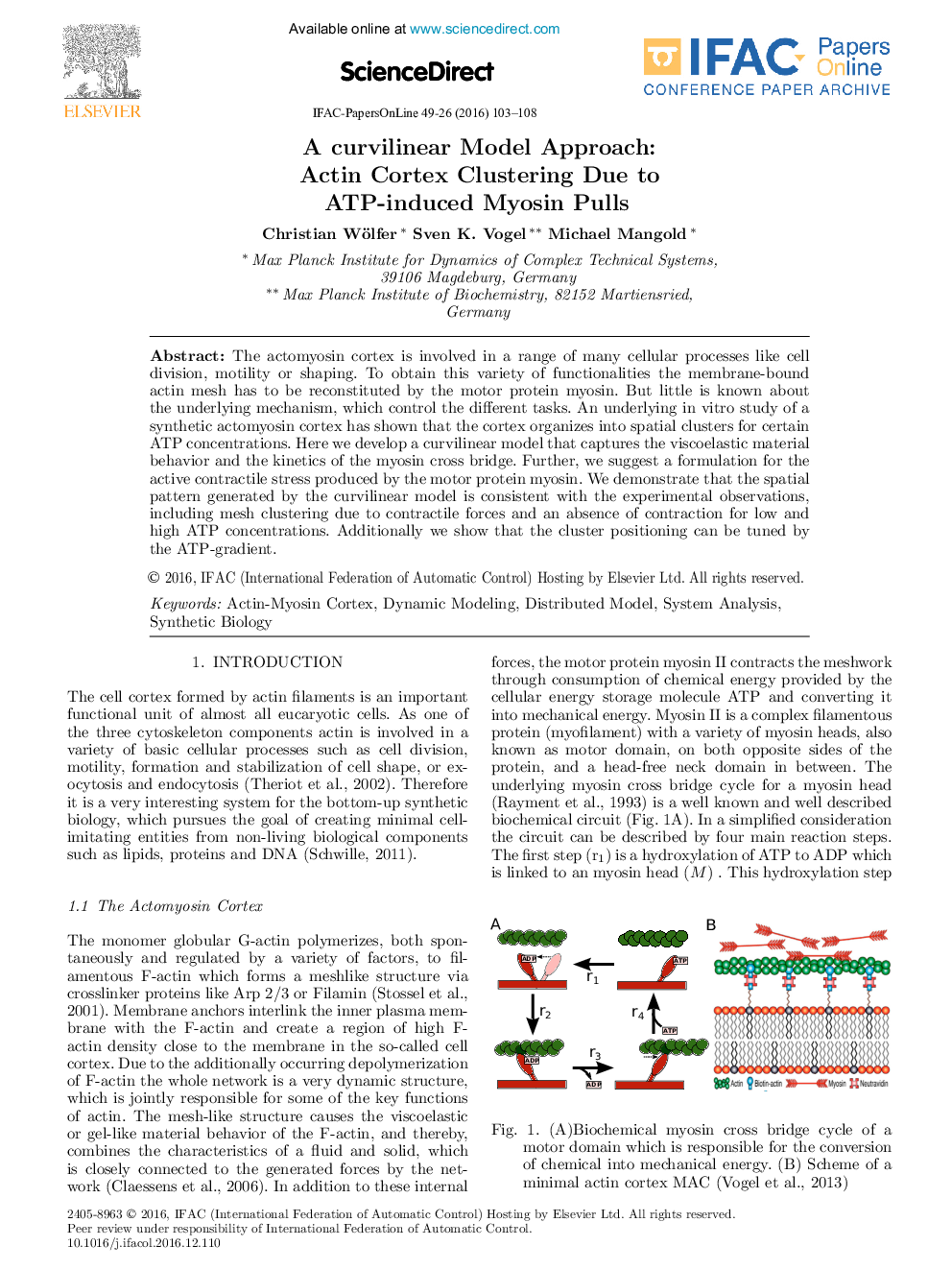| Article ID | Journal | Published Year | Pages | File Type |
|---|---|---|---|---|
| 5002924 | IFAC-PapersOnLine | 2016 | 6 Pages |
Abstract
The actomyosin cortex is involved in a range of many cellular processes like cell division, motility or shaping. To obtain this variety of functionalities the membrane-bound actin mesh has to be reconstituted by the motor protein myosin. But little is known about the underlying mechanism, which control the different tasks. An underlying in vitro study of a synthetic actomyosin cortex has shown that the cortex organizes into spatial clusters for certain ATP concentrations. Here we develop a curvilinear model that captures the viscoelastic material behavior and the kinetics of the myosin cross bridge. Further, we suggest a formulation for the active contractile stress produced by the motor protein myosin. We demonstrate that the spatial pattern generated by the curvilinear model is consistent with the experimental observations, including mesh clustering due to contractile forces and an absence of contraction for low and high ATP concentrations. Additionally we show that the cluster positioning can be tuned by the ATP-gradient.
Related Topics
Physical Sciences and Engineering
Engineering
Computational Mechanics
Authors
Christian Wölfer, Sven K. Vogel, Michael Mangold,
